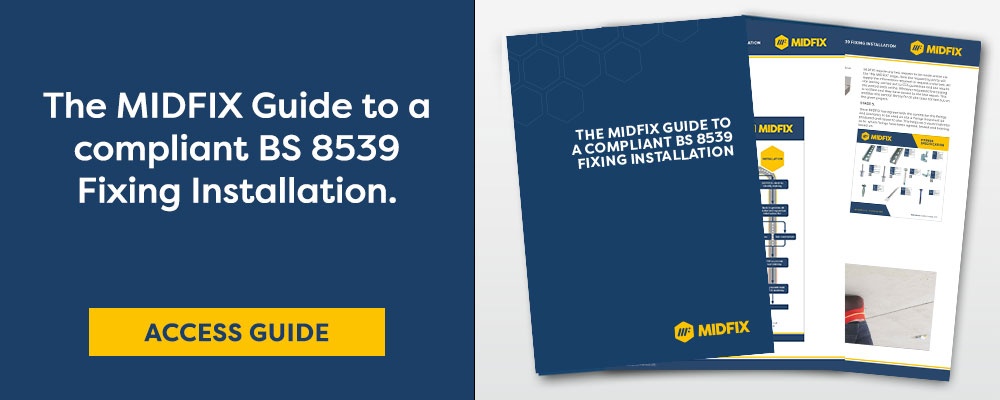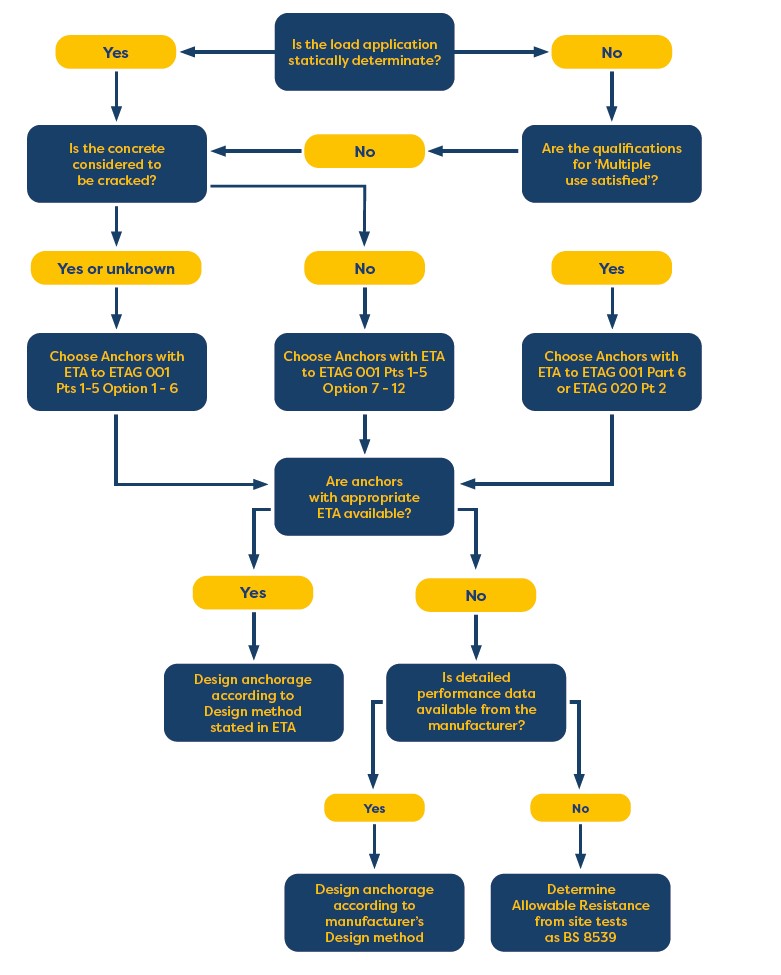Is there an unbiased explanation around the cost of ETA approved anchors and non ETA approved anchors on the internet?
A client who recently reached out to us doesn’t think so. He stated in an email:
“As you are no doubt aware, it’s a minefield when trying to find information on why ETA approved anchors are more expensive than anchors without an ETA approval… trawling through the internet for usable information is exceptionally difficult. Of the few forums, I’ve found, most descend into people arguing about how ETA approved anchors are not worth the extra expense.
What would really help a great deal is to find unbiased information that explains the possible reasons why there is a price difference and backs off and then lets me make the decision on whether they are worth specifying”
This article is our effort to provide an objective source of information about the cost of ETA approved and anchors without an ETA approval.
The approach is simple. We list out the reasons that make the cost go up down for both anchor types… then back off so then you can make that decision.
Outlined below are the article's key sections (simply click on the section you require)
Why are anchors/fixings important to an M&E installation?
Why do anchors/fixings fail?
What is a ‘non ETA approved’ anchor?
What is an ETA?
What is an ETA approved anchor?
How can a manufacturer attain an ETA approval?
What tests are carried out to attain an ETA approval?
How much does an ETA approved anchor cost?
Why do ETA approved anchors cost more than anchors without ETA approval?
Why are some brands expensive?
Why are some brands less expensive?
Why specify ETA approved anchors?
How can a specifier select an ETA approved anchor?
What are the benefits of ETA approved anchors?
Where can a specifier find ETA approved anchors/fixings?
After reaching out to a leading European anchor/fixing manufacturer and asking that exact question, we were given this reply:
“It is difficult to determine but what I can say is that the cost for the development of an anchor, for getting an ETA approval, and maintaining that ETA approval costs more than €1,000,000".
The short answer is that ETA approved anchors are more expensive than anchors without an ETA approval, and this is primarily because of two reasons; the cost to the manufacturer of acquiring an ETA approval and because the quality of the anchor is higher in order to be able to successfully perform in the ETA tests.
Why are anchors/fixings important to an M&E installation?
Anchors are a small component to which little consideration is frequently given but are absolutely vital to preventing the collapse of the structure or installation that depends on them – Nigel Rogers, Senior Purchasing Manager – MIDFIX
Considering the integral role they play in the safety of a building it is surprising to note that as little as 0.5% of the total outlay of project is spent on anchors/fixings. It seems that within the M&E sector anchors/fixings are still seen as a commodity item and are largely specified only when required on-site. This is a problem as many anchors/fixings specified for the M&E sector are deemed as ‘safety critical’ by Construction Product Regulation because if they were to fail they would lead to injury or economic damage, for that reason it is recommended that relevant British Standards (BS 8539) should be followed to safely select and install anchors/fixings. Unfortunately, in many cases, the responsibility of specifying anchors/fixings is left to the buying team who may not have the necessary information to safely select an anchor/fixing.
Within the building services industry anchors/fixings are seen as the ‘weak link’ within a project because:
- They are often at the interface between parts that are the responsibility of different parties.
- They are often sensitive to workmanship.
- Their design may be complex and poorly understood.
- They may deteriorate over time and their deterioration may not be easily seen or identifiable.
- They may be concealed by finishes or shrouds, which may mask deterioration, poor installation, or even missing fixings.
- The failure of one fixing may trigger the failure of another fixing as they take more load, leading to a progressive collapse.
- Partly due to their low cost they are often left to the “last minute” before ordering, resulting in very little thought going into the selection process.
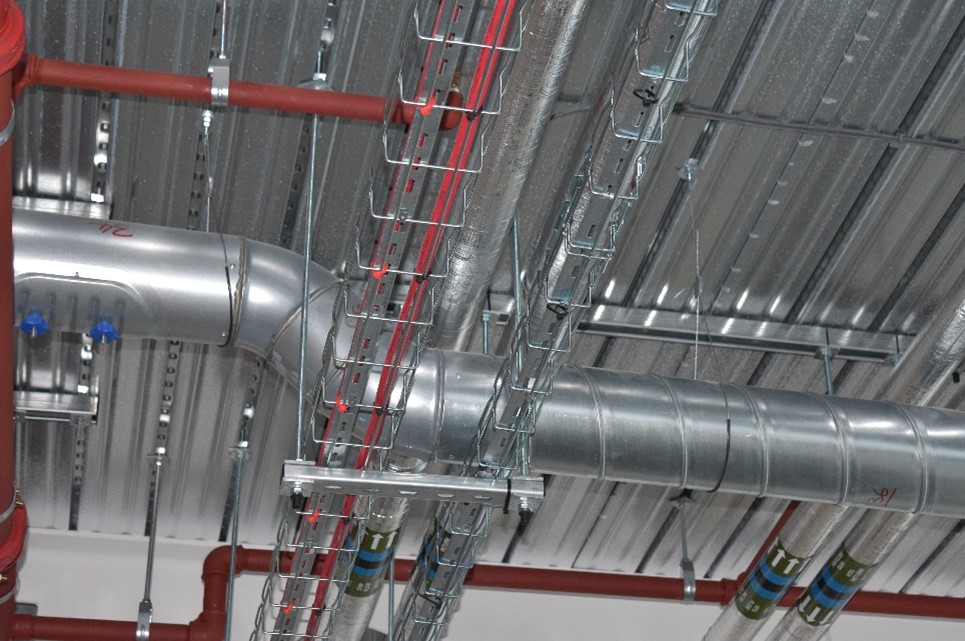
Why do anchors/fixings fail?
Anchors and fixings tend to fail because of two reasons:
- An anchor has been incorrectly selected.
- Anchor installers have not been adequately trained leading to an installation failure.
What is a non ETA approved anchor?
An anchor that hasn’t acquired a European Technical Assessment for a particular application. The performance of one anchor to another can’t be compared as different manufacturers carry out unique product testing.
What is an ETA?
An ETA is defined as a ‘European Technical Assessment’, ETA’s are a group of harmonized tests that anchors/fixings are put through to attain an ‘ETA-approval’. The only way to independently test and assess construction fixings is by acquiring an ETA approval for a specific application. ETA’s are respected by the construction and the M&E sector and are universally recognised as a mark of quality for construction fixings.
It is critical that the entire ‘fixings chain’ understand what an ETA is and their importance. An ETA report can help the specifier to safely select the correct anchor/fixing for a specific application, mitigating the risk of a site failure.
What is an ETA approved anchor?
To achieve an ETA, an anchor must undergo a complex testing programme against defined harmonised testing criteria to determine its suitability for use in a specified application. The European organisation for technical assessment provides the guidance that all testers must abide by.
The ETA defines the anchor, the intended use of the anchor, the materials it can be used in and how it is to be installed. ETA approved anchors/fixings carry the ETA/CE mark. An ETA assessment number and installation instructions are provided with a clear ETA report.
ETA’s are split into 12 options per application. An ETA will outline what parameters the anchor is suitable for, for instance whether it is qualified for non-cracked or cracked concrete or another substrate.
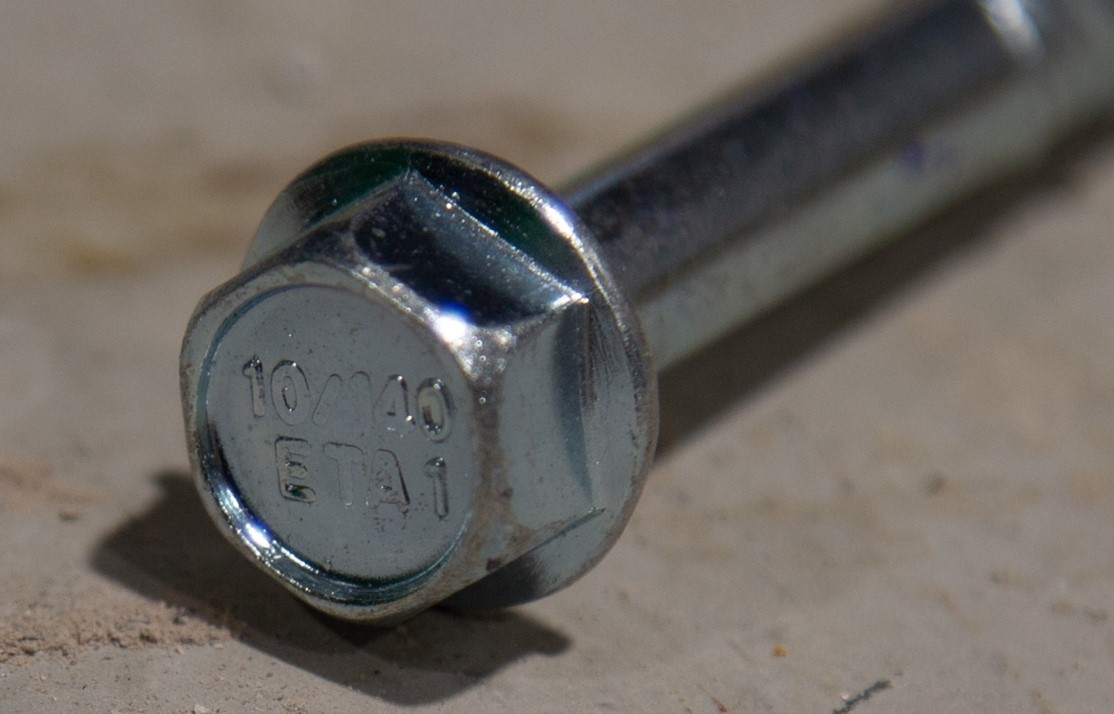
How can a manufacturer attain an ETA approval?
- A manufacturer requests the European technical assessment for a construction product that is not covered or not fully covered by a harmonised standard. The request is addressed to the technical assessment body (TAB) for the respective product area.
- The technical assessment body issues the European technical assessment on the basis of a European assessment document (EAD) adopted by the European Organisation for Technical Assessment (EOTA)
- An updated list of references for the final EAD’s is published b the Commission in the office Journal of the European Union.
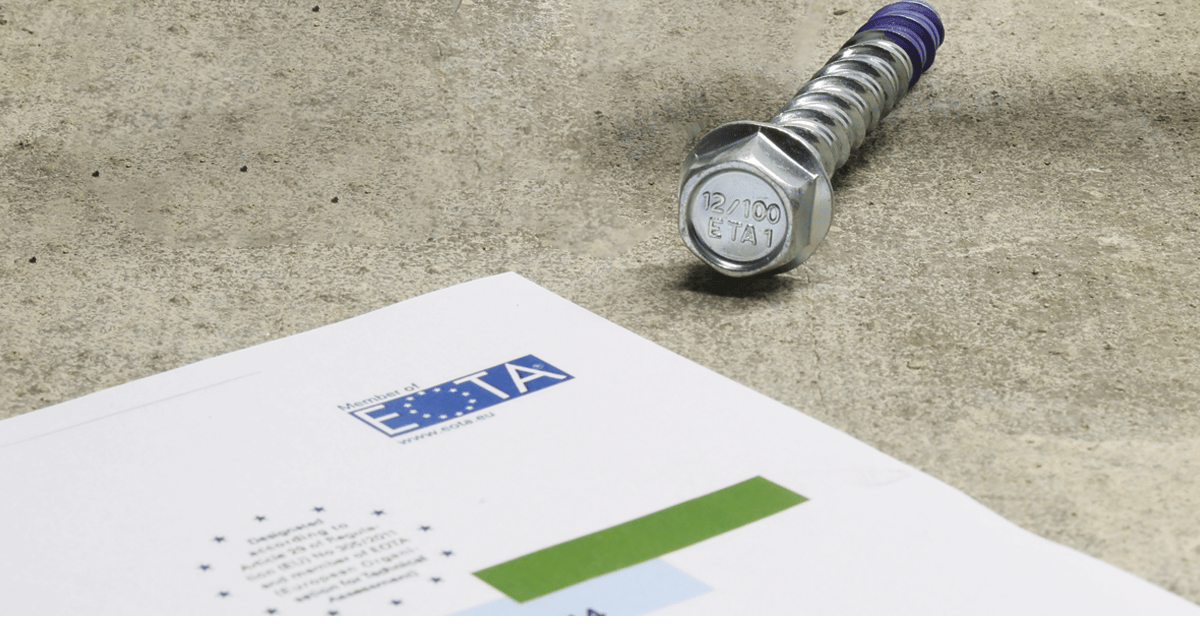
What tests are carried out in order to achieve an ETA approval?
According to the CFA, an ETA test’s the anchors in three classes:
Suitability tests
These tests determine the sensitivity of anchors/fixings (load/displacement, ultimate load tests) to a few changeable factors, such as;
- Low and high concrete strength
- Repeated loads
- Location in cracks
- Repeated crack openings
- Sustained loads
- Elevated temperatures and aspects of installation such as hole cleaning, drill diameter tolerance, installation torque, humidity and temperature.
Admissible Service Condition tests
These tests show the characteristic resistance as well as the correct edge and spacing distances, this is dependent on the option class chosen by the manufacturer.
Durability
Different environmental conditions are considered. If zinc plated anchors are only used in dry indoor conditions and stainless-steel anchors are used for normal external atmospheric exposure or permanently damp internal conditions then no tests are required. For harsher environments then different materials and coatings may be approved with special tests. Bonded anchor materials are subject to specialist accelerated ageing tests.
How much does an ETA approved anchor cost?
As we mentioned at the start of the article, the cost for a manufacturer to develop and acquire an ETA approval for a chemical anchor would cost over €1,000,000 and this will no doubt be passed onto the consumer.
On average a box of 100 ETA approved anchors tends to be around 55% more than a box of wedge anchors without an ETA approval.
Let’s take the most popular anchor specified into the M&E sector, a drop-in anchor technically known as a deformation-controlled anchor. A standard wedge anchor without an ETA approval would cost between £12-£18 per box in comparison an ETA approved anchor would cost £21-32 per box.
Why do ETA approved anchors cost more than anchors without ETA approval?
- The original cost of manufacturing the product (including the cost of purchasing raw materials).
- The cost of acquiring an ETA-approval for a specific application (this will greatly fluctuate).
- The manufacturer’s and consumers margins.
- The market value determined for a specific ETA-approval.
- The supply and demand of the different ETA options.
- They are made with a higher quality standards to make sure they pass the ETA's
Why are certain brands more expensive than others?
Most anchors/fixings sold across Europe are manufactured by a handful of companies and in many cases the cost of manufacturing an anchor is very similar. The following factors outline why one brand may be more expensive than another;
- Supply and demand
- Availability of stock
- The level of testing the anchor/fixing has undertaken
- The secondary services which come with an anchor/fixing such as training.
Ultimately the price is chosen by the manufacturer based on market forces and the value they perceive their products are worth to their targeted consumers.
Why are certain brands less expensive than others?
Some brands may have a different pricing strategy and work on finer margins. The competitiveness of a product range and the value the company believes their brand is worth to their customers. These are just a few factors that will ultimately determine why some brands are more expensive than others.
Why specify ETA approved anchors?
In this section we will break down the key reasons why different stakeholders within the ‘fixings chain’ may specify an ETA-approved anchor for their next M&E installation:
Regulations
The regulatory body: the construction products regulation states that ‘all anchors offered for use in ‘safety critical’ applications should be suitably approved. These approvals are called European Technical assessments. It is the contractor’s responsibility to specify ETA approved anchors. Furthermore, the BS 8539 standard clearly states: where an ETA anchor is available for the specific application then it must be specified.
Golden Thread Legislation
The building safety bill will be updated by the end of the year with a piece of legislation called ‘the golden thread’. Created on the back of the Hackitt reports, the purpose of this legislation is to have one single source of documentation that can be examined at any stage of a building’s lifecycle to ensure the safety of a building. The maintenance, upkeep, and storage of the document will be the responsibility of a ‘duty holder’ (the client, principal designer, principal contractor). Contractors are now acutely aware of their responsibilities and will focus on recording the performance data of all assets supplied on-site. As performance data is clearly shown with an ETA-approved anchor it is likely that they will be specified within the fixing policy at the beginning of a project.
Anchor/Fixing selection
For a compliant and safe selection of an anchor/fixing it is best to compare ETA anchors. This is because performance characteristics are known for a specific application. A simple comparison between the EAD can show the specifier which anchor is fit for purpose. The ETA gives the specifier all the information required to make the selection (if the design strength of the substrate is known). Without comparing different EAD’s the selection process becomes very complicated.
How can a specifier select an ETA approved anchor?
Below is a simple flow chart that can help the specifier select the suitable ETA approved anchor.
Easily identifiable on-site
From a practical perspective once on-site, it is easy to identify ETA-approved anchors as the packaging will display the badge and a CA marking. The badge shows the unique ETA assessment number and the application that the anchor has been assessed for. The results of an ETA will be detailed in an EAD (European Assessment Document) that will also be provided.
Anchor/Fixing Testing
If an ETA anchor has been selected, supplied and installed into a known substrate on-site by a competent individual then there is no need to carry out a post-installation proof test.
What are the benefits of ETA approved anchors?
When comparing both types of anchors it does cost more, however, that extra cost provides the following benefits:
- From a litigious and compliance perspective, the construction product regulations (CPR) states that where failure of an anchor would lead to an injury or significant material or economic damage then it is deemed ‘safety critical’. Anchors/fixing installed into overhead M&E services fall under this category.
- The British standard BS 8539 advises that where an ETA-approved anchor is available for the specific application then it must be specified.
- As an ETA-approved anchor undergoes a complex testing programme against defined harmonised testing standards it can determine the quality and suitability for use in an application making it simple for the specifier to select.
- Zero-harm and programme delivery are key priorities for M&E contractors, if an ETA approved anchor is specified and installed correctly into the approved application it guarantees its performance and the load it can take, safeguarding the liabilities of the parties involved and reducing the risk of site failure.
- Manufacturers of deformation-controlled anchors will usually have an indentation mark on them (referred to as a witness mark) by simply undoing the rod an auditor can see if it has been installed correctly.
- All parties to the construction process can be confident in the long-term security of the fixings.
- With an ETA approved anchor, you have identifiable and traceable performance characteristics to show that it is fit for purpose.
- No site testing is required where the manufacturer provides data for the substrate in question and the installation is undertaken by competent operatives under supervision.
- A clear paper trace enables a contractor to provide proof that the ETA anchor specified is fit for purpose, useful for keeping the golden thread of information for building safety.
Where can a specifier find ETA approved anchors/fixings?
ETA approved anchors can be purchased from many different first-fix suppliers. Typically, ETA-approved anchors and fixings are supplied with an ETA report and a CE marking.
Conclusion
When tendering for a project, it is important that the anchor/fixing supplier underlines the importance of ETA approved anchors to the contractor at the beginning of a project.
When comparing ETA approved anchors with anchors/fixings without an ETA approval, the ETA approved anchors will be more expensive. However, If ETA approved anchors are specified for the specific ETA approved applications and installed by a competent installer it can mitigate the risk of site failure.
The value derived from ETA approved anchors can give the entire supply chain the confidence that a compliant anchor/fixing selection has been carried out correctly.
REFERENCE
Construction Fixings Association (CFA), 2013 “ETAs & design methods for anchors in construction” Accessible [http://www.the-cfa.co.uk/media/80360/etas___design_methods_for_anchors_in_construction_26_07_13.pdf]



